Ledebouria floribunda
Ledebouria floribunda (Baker) Jessop
Family: Hyacinthaceae
Common names: spotted African hyacinth (Eng.); isikholokotho (Zul.)
Introduction
A large and usually attractively spotted Ledebouria species; this species is one of the largest species in the entire genus.

Description
Description
Usually solitary, deciduous, bulbous plant, usually with a large bulb up to 80 mm in diameter. Bulbs covered with multiple layers of brown, dry, membranous, dead bulb scales, usually protruding above the soil around the neck of the bulb.
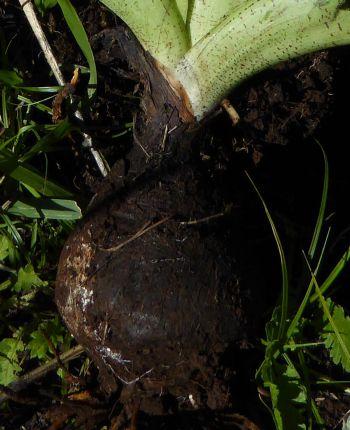
Leaves 4–6, lanceolate, somewhat fleshy, produced in summer simultaneously with or after the flowers, green usually with spots and markings mostly on the upper surface, lower surface plain green or spotted and banded towards the base.
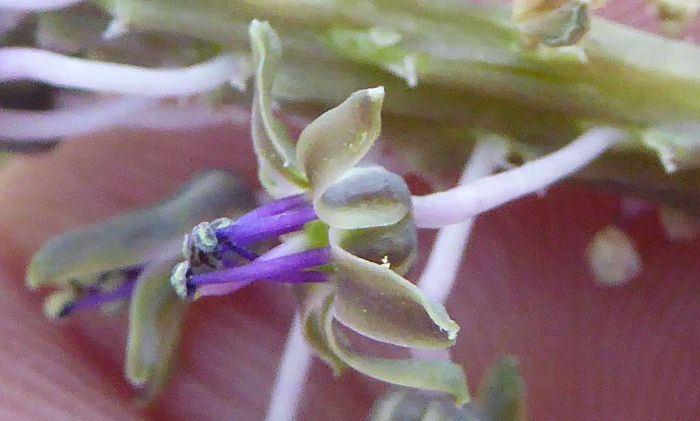
Multiple inflorescences, 3–6, are usually produced early in the season and into early summer, October to November; decumbent inflorescences hang outward and downward out of the rosette of leaves, where they position themselves mostly at, or near ground level. The somewhat flattened decumbent peduncle (main stalk) is green and may be slightly spotted and marked with faint to bold, purple markings, with many small florets (small flowers) borne at the distal end, in a bottle-brush-like fashion. Each individual floret is attached to the peduncle by means of a slender green pedicel (flower stalk). The individual florets are comprised of 6, strongly recurved tepals (petals), which are usually green, with pale or dark pink margins. The purple to maroon stamens extend beyond the tepals, bearing small, pale yellow anthers at their tips.
Conservation Status
Status
Ledebouria floribunda is not uncommon and occurs over a wide range. It is not regarded as being under any threat of extinction and is listed as Least Concern (LC) in the Red List of South African plants.
Distribution and habitat
Distribution description
Ledebouria floribunda is recorded as preferring moist situations in grassland, montane forest and forest margin habitats. The species occurs in the following Provinces of South Africa, from the Transkei area in the Eastern Cape, through KwaZulu-Natal and Mpumalanga, and into Limpopo, as well as in Swaziland; isolated records also exist from Lesotho.
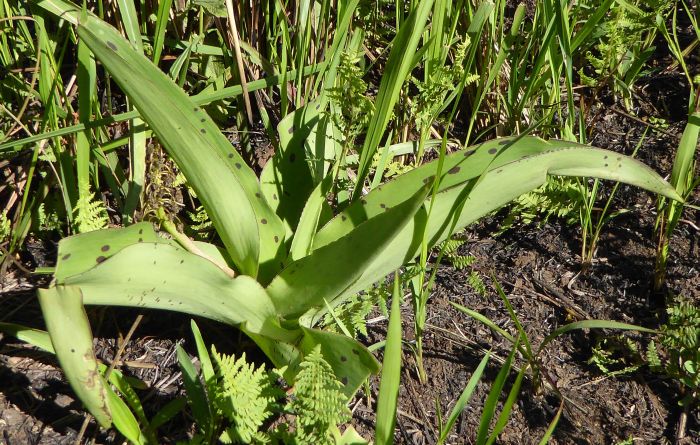
Derivation of name and historical aspects
History
The species was first placed in the genus Scilla and named several times under different names, including Scilla floribunda, S. lauta, S. pendula, S. princeps, S. subsecunda and S. tricolor, which later proved to be incorrect, and it was transferred correctly to Ledebouria with all the other names being combined into Ledebouria floribunda. The number of different names that were historically ascribed to this species, is a testament to the large amount of variation which the species encompasses. The genus is named in honour of the German-Estonian botanist, Professor Carl Friedrich von Ledebour (1785–1851). The specific name floribunda originates from the Latin floribundus, which normally refers to the large number of flowers produced by the species.
South Africa has 39 species of Ledebouria (in section Ledebouria). However, when considered together with section Drimiopsis and section Resnova, there are 59 species in South Africa.
Ledebouria floribunda can easily be confused in the field with other Ledebouria species, the most likely to cause confusion are L. zebrina and L. revoluta. L. floribunda differs from the latter by having pink in the flowers, whereas L. zebrina has green and white flowers with no pink. The other is L. revoluta which although can be considered similar, is smaller in all respects and has less succulent leaves.
Ecology
Ecology
Although there is little documented information about the ecology of this and most Ledebouria species, porcupines are known to dig out and eat the bulbs of several species of Ledebouria and large ungulates have been observed to browse the leaves.
The flowers are open and cup-shaped with their pollen openly presented, which suggests that the flowers are opportunistically pollinated by most visiting insects. In the wild, many different insects can be seen visiting the flowers, which are usually very faintly sweetly scented. The inflorescences are mostly erect to spreading at first, becoming more flaccid (floppy) with age; this may have something to do with optimizing visibility of the flowers to attract pollinators. The seed is small, black and roundish. S. Venter (1993) suggests that Ledebouria seeds may be distributed by water wash, which is likely after heavy thunderstorms, which are frequent across the areas where the species occur.
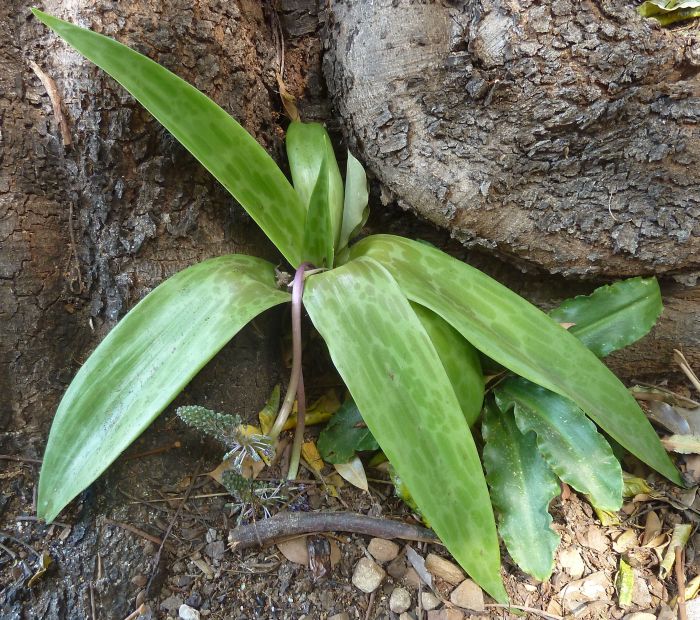
Uses
Use
The genus Ledebouria has been cited as having been used medicinally for various purposes, including pregnancy, diarrhoea, influenza, backache, skin irritations, wound treatment, as well as lumbago. The genus is also reported as being poisonous, although it is also reported that bushmen ate the bulbs of certain species, including L. revoluta and L. apertiflora. However, these may have been cooked or prepared in some manner to destroy the toxins, which is not specifically documented. Despite the fact that some large ungulates do browse the leaves, the entire genus should be regarded as being poisonous as a precaution.
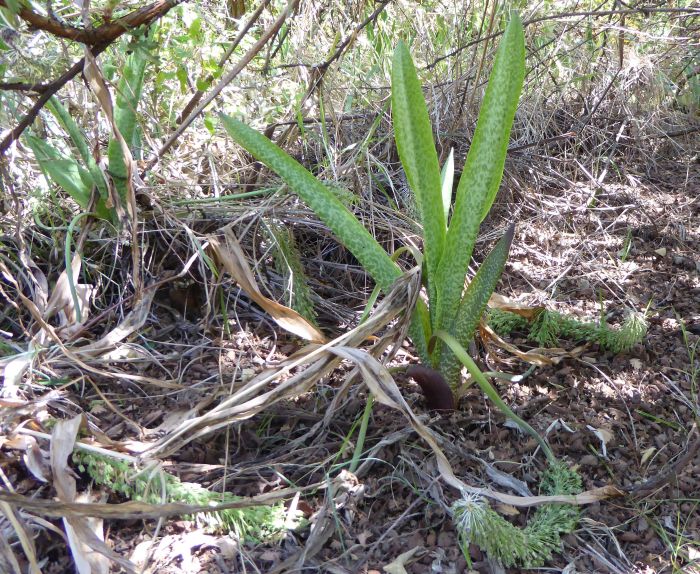
Growing Ledebouria floribunda
Grow
The spotted African hyacinth is very easily cultivated in gardens and containers. They are best cultivated in terracotta pots in full sun to semi-shade, in a warm climate. The bulbs should be planted in sandy loam or a well-drained, organic potting medium, with sifted kraal (cattle) manure or well-aged compost added. Watering should be done mainly during the summer growing season. The pots should be dried out during the dry winter rest period. They prefer a warm growing season, but can withstand very cold temperatures in winter, while the soil is kept completely dry and the plants are dormant. During the dry winter dormancy period, the pots should be moved out of the rain and placed in a dry, cool area with good air movement. Watering can commence at the onset of warmer weather (August to September in South Africa). Keeping the plants in strong sunlight, results in the darkest and most bold leaf markings, which quickly fade in the shade.
Propagation from seed is the best method of producing new plants. Seed must be sown fresh (cannot be stored) in spring or summer, in deep seed trays filled with the sifted potting mixture detailed above. The seed can be sown on a firmly tamped surface and lightly covered with the same mixture, approximately 2–4 mm deep. The seed trays should be kept in a bright, warm position out of direct sunlight and kept damp for between 2 to 3 weeks, until germination has commenced. Once the seedlings have emerged, watering can be reduced. The seedlings can be pricked out into community pots or individual containers after their first year. Repotting should be done shortly before the onset of warmer temperatures. Flowering size bulbs can be attained after 3 to 5 years.
References
- Hankey, A. 2011-07. Ledebouria Roth (Hyacinthaceae). PlantZAfrica. Internet 5 pp. http://pza.sanbi.org/ledebouria-genus
- Hankey, A.J. 2019. Proposed English common names for African hyacinths (genus Ledebouria). Plantlife SA, Vol 47:7 https://plantlifesouthafrica.blogspot.com/
- Hankey, A.J. & Victor, J.E. 2005. Ledebouria floribunda (Baker) Jessop. National Assessment: Red List of South African Plants version 2017.1. Accessed on 2019/07/30.
- Jessop, J.P. 1970. Studies in the bulbous Liliaceae in South Africa: 1. Scilla, Schizocarpus and Ledebouria. Journal of South African Botany 36(4): 233–266.
- Venter, S. 1993. A revision of the genus Ledebouria Roth (Hyacinthaceae) in South Africa. Unpublished M.Sc. thesis, University of Natal, Pietermaritzburg.
- Venter, S. 2008. Synopsis of the genus Ledebouria Roth (Hyacinthaceae) in South Africa. Herbertia 62: 85-155
- Wikipedia. Carl Friedrich von Ledebour. http://en.wikipedia.org/wiki/Carl_Friedrich_von_Ledebour. Accessed 6 November 2018.
Credits
Andrew Hankey
Walter Sisulu National Botanical Garden
August 2019
Plant Attributes:
Plant Type: Bulb
SA Distribution: Eastern Cape, KwaZulu-Natal, Limpopo, Mpumalanga
Soil type: Sandy, Loam
Flowering season: Spring, Early Summer
PH: Neutral
Flower colour: Green, Purple, Pink
Aspect: Full Sun, Morning Sun (Semi Shade)
Gardening skill: Easy
Special Features:
Horticultural zones










Rate this article
Article well written and informative
Rate this plant
Is this an interesting plant?
Login to add your Comment
Back to topNot registered yet? Click here to register.